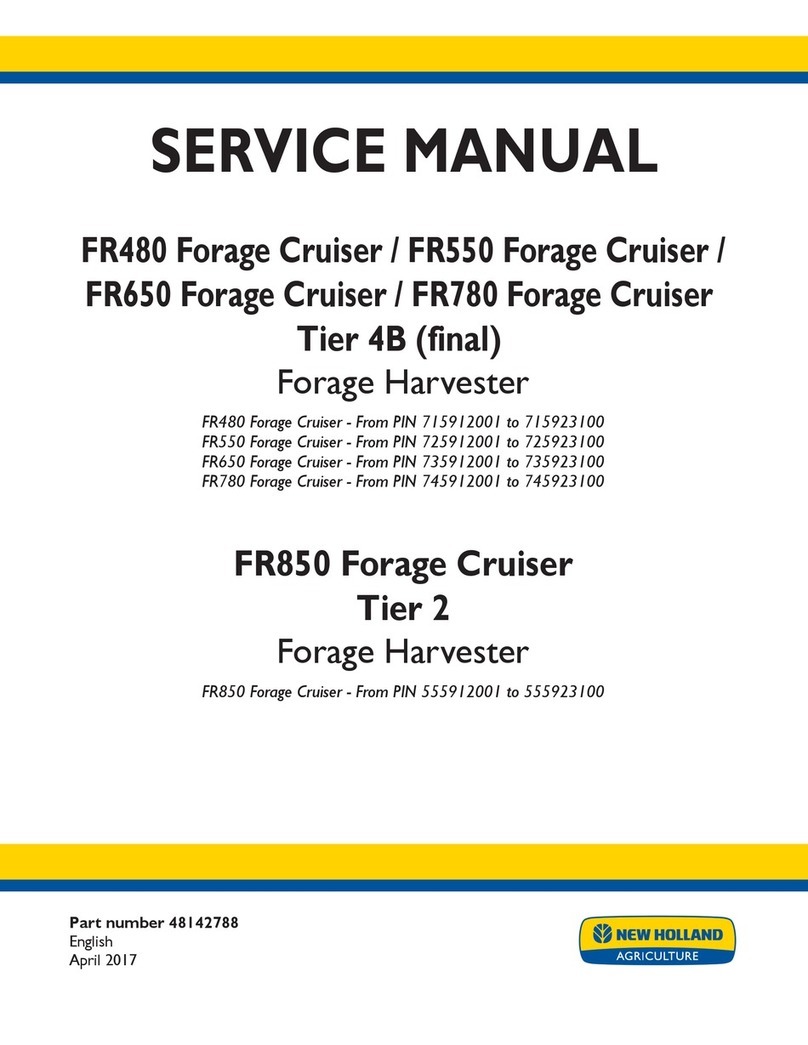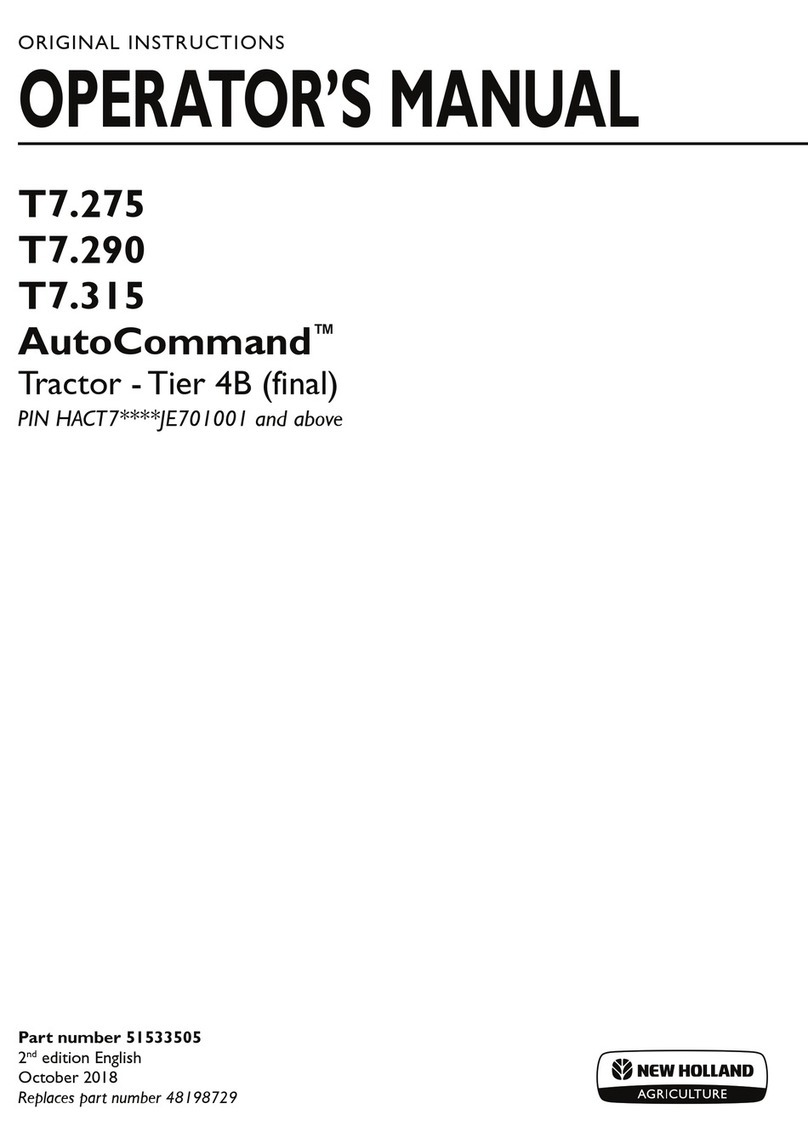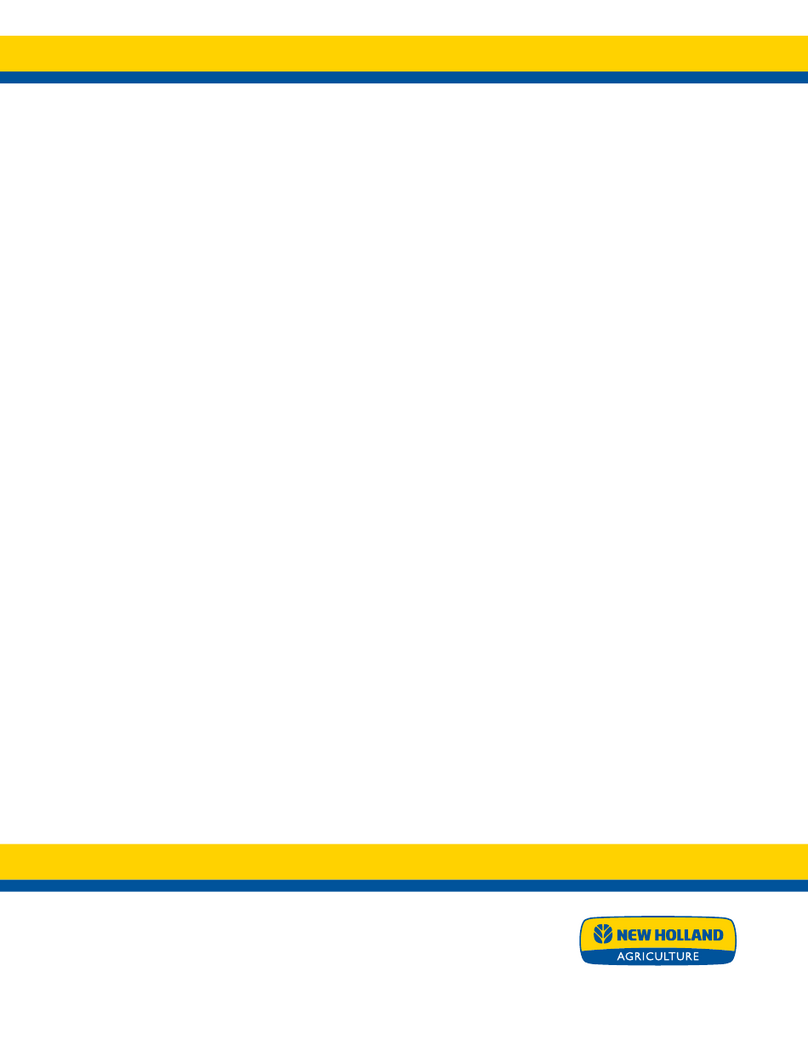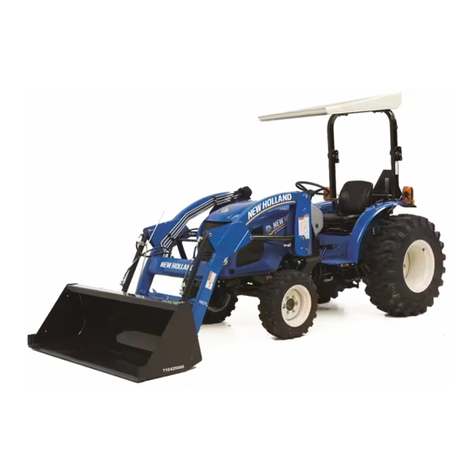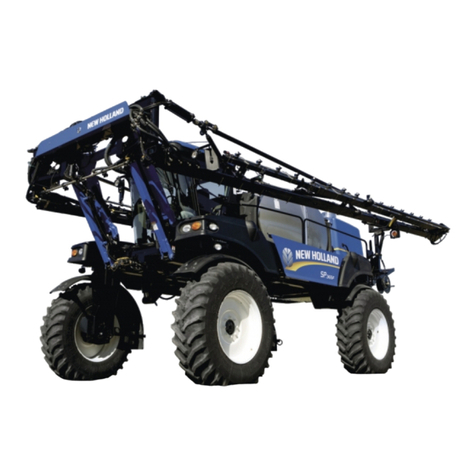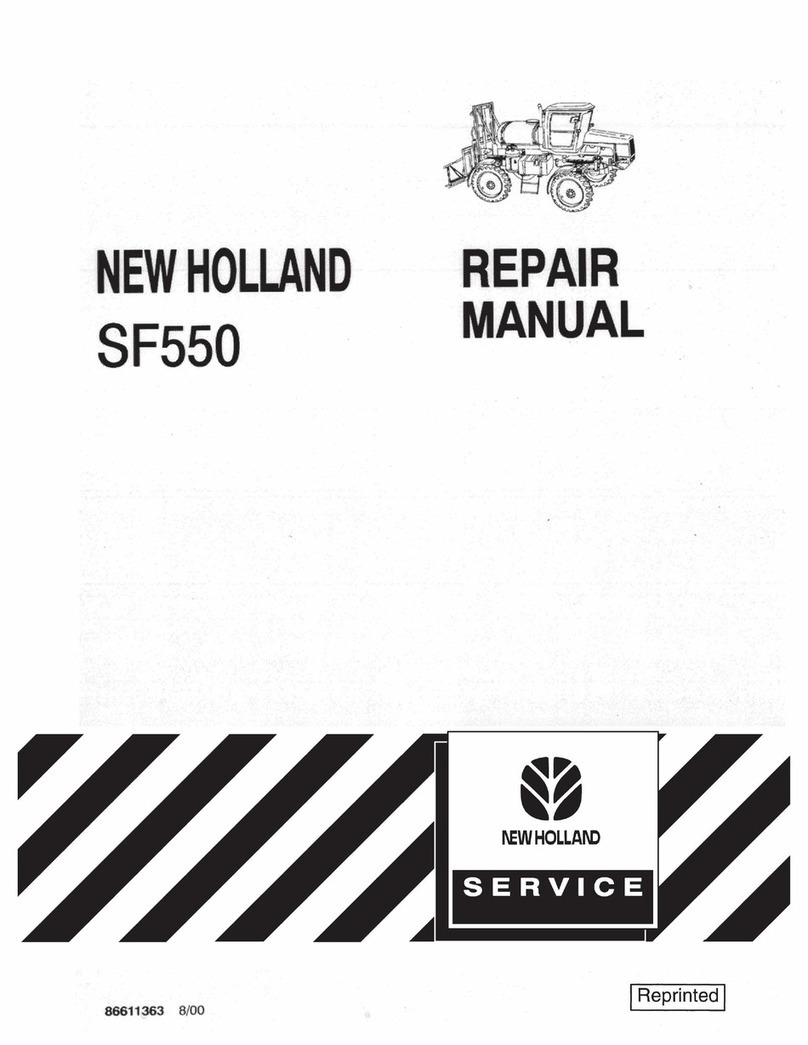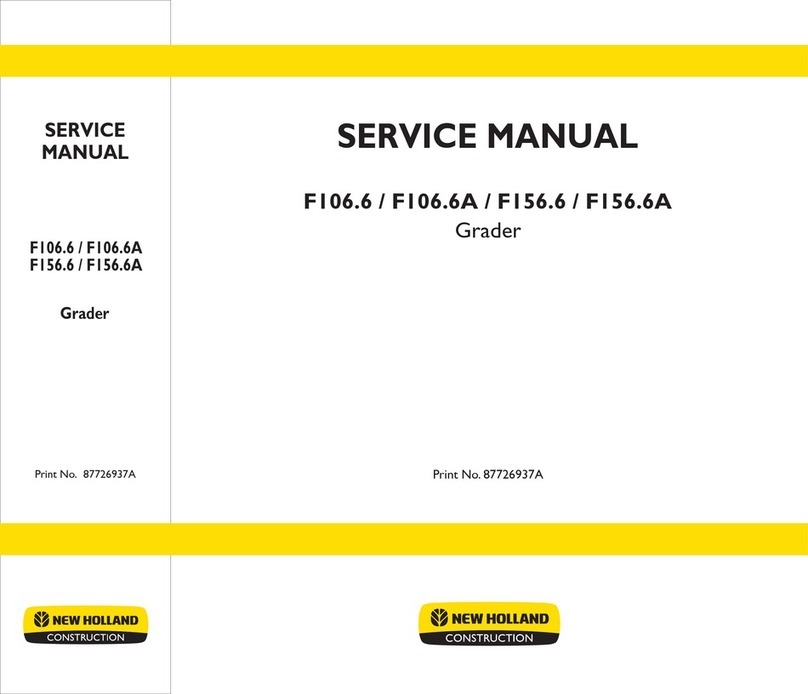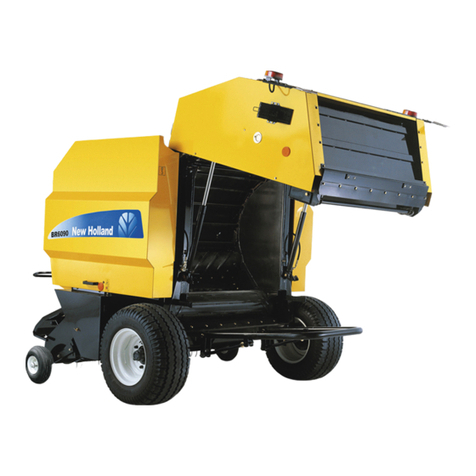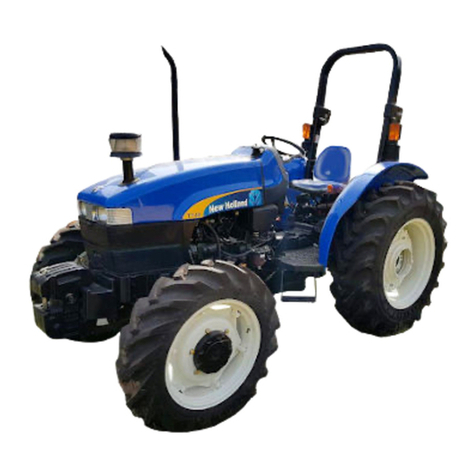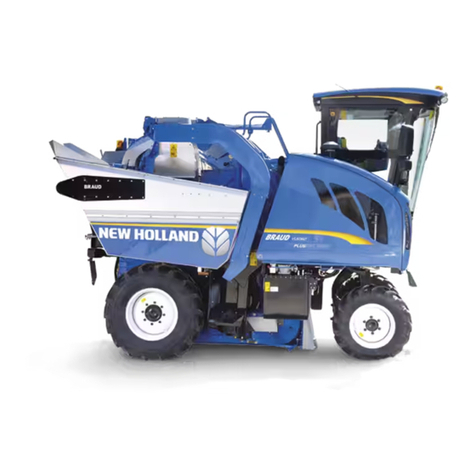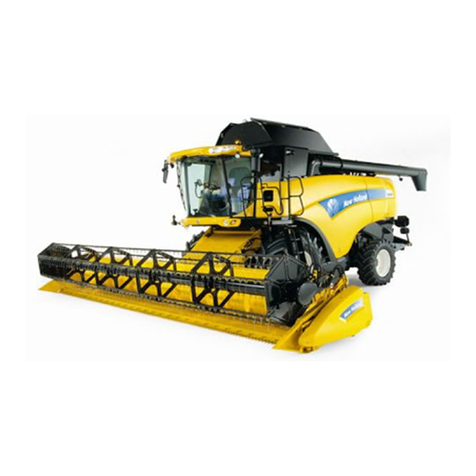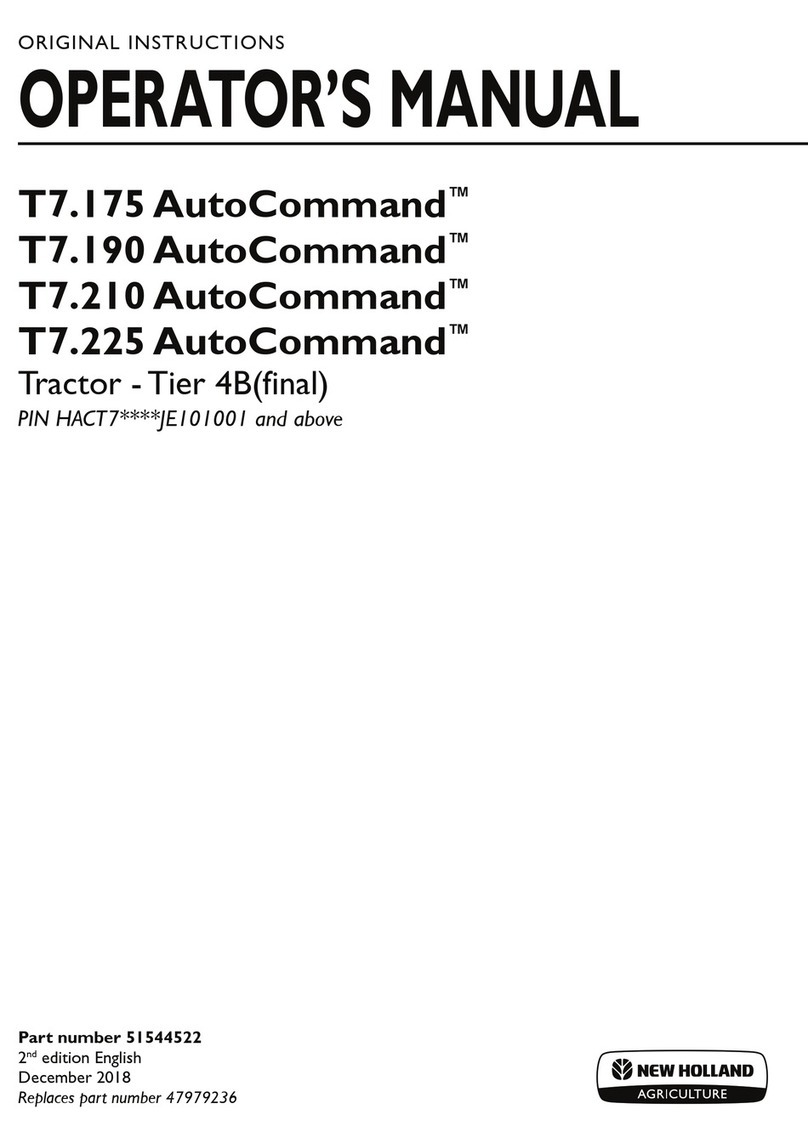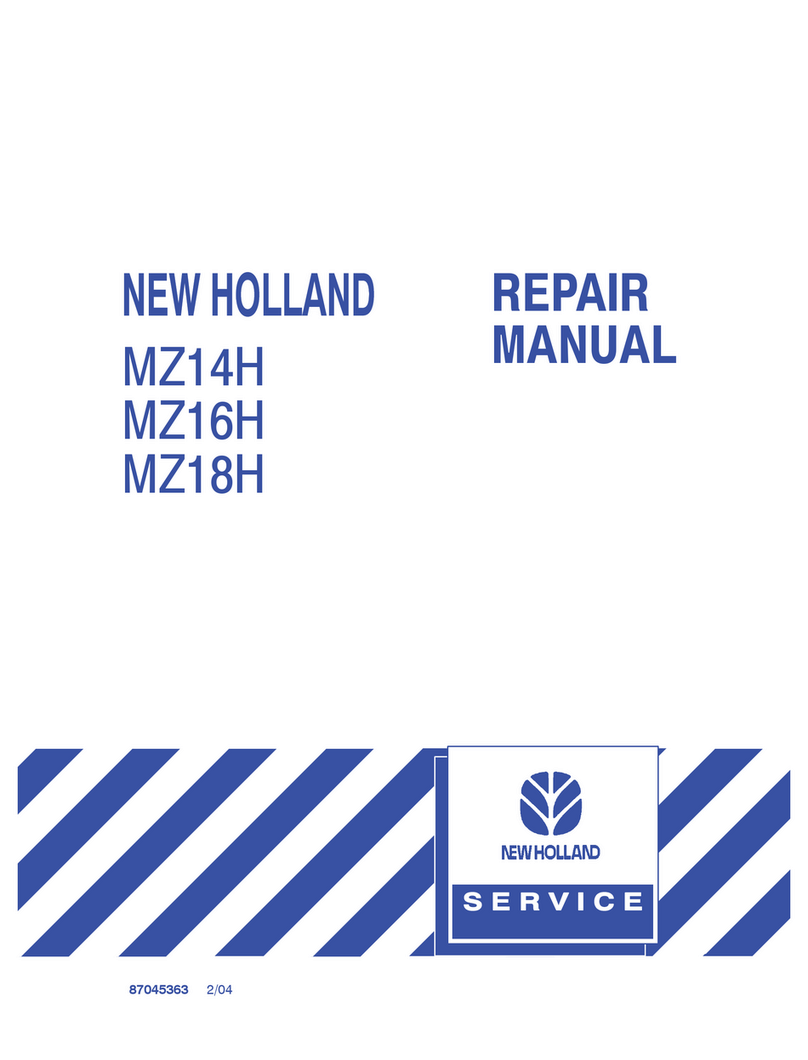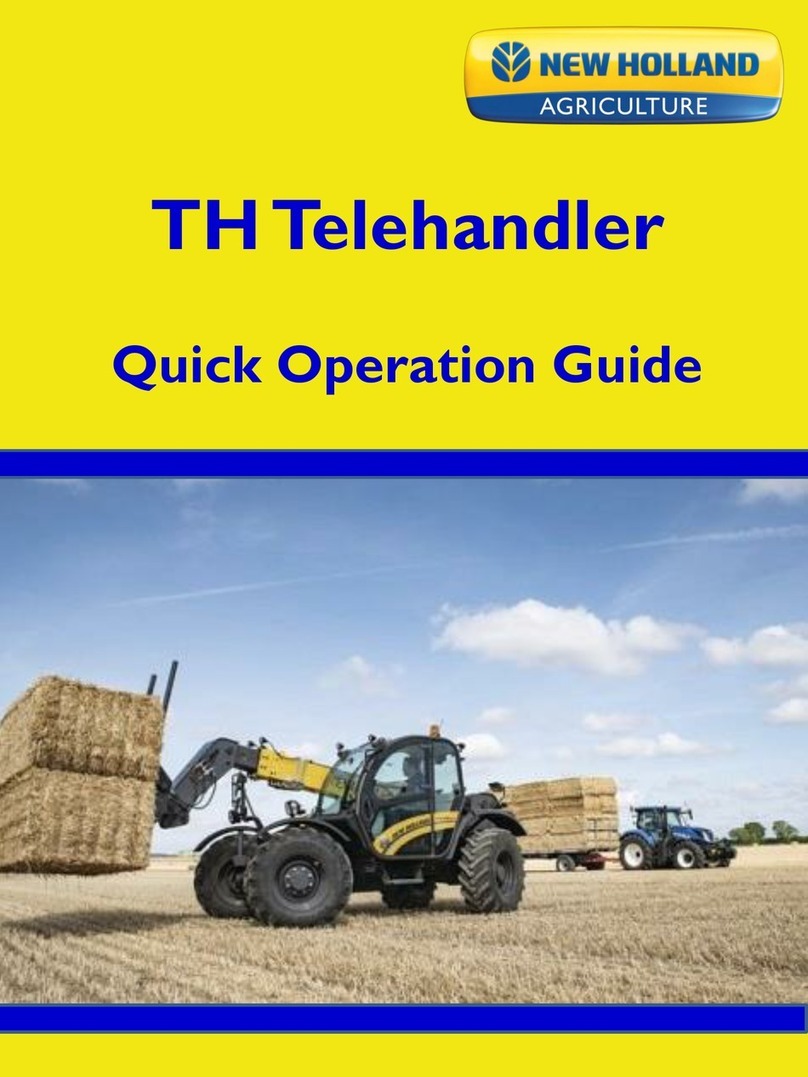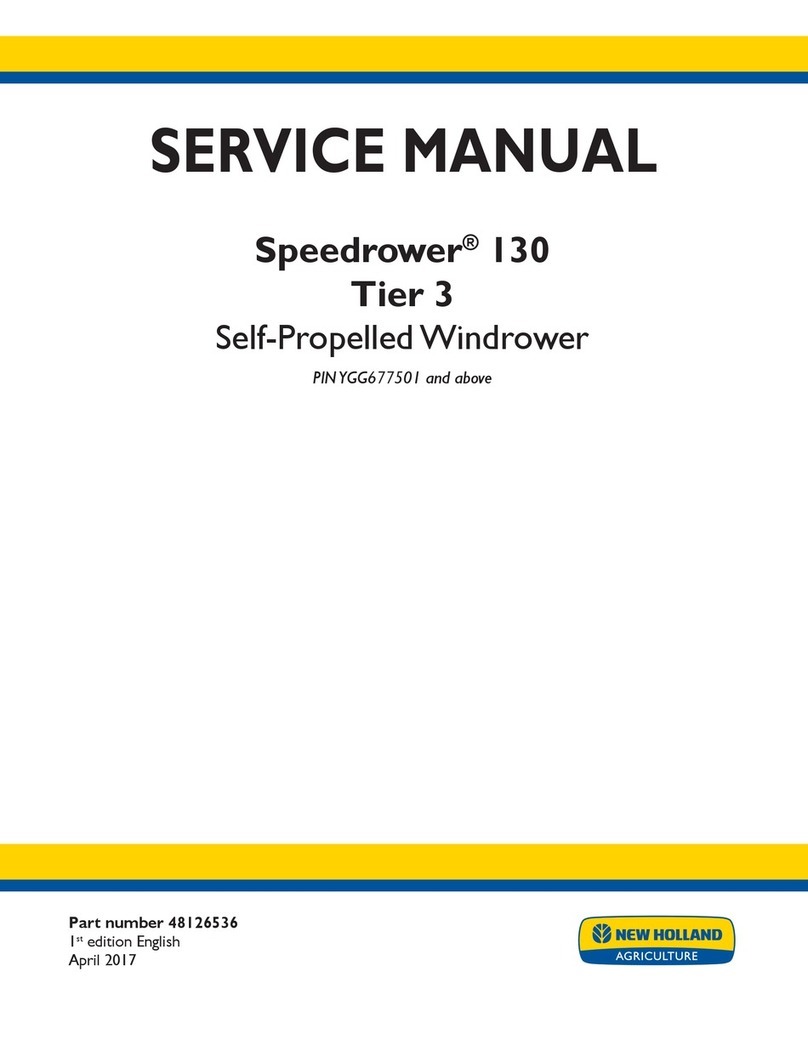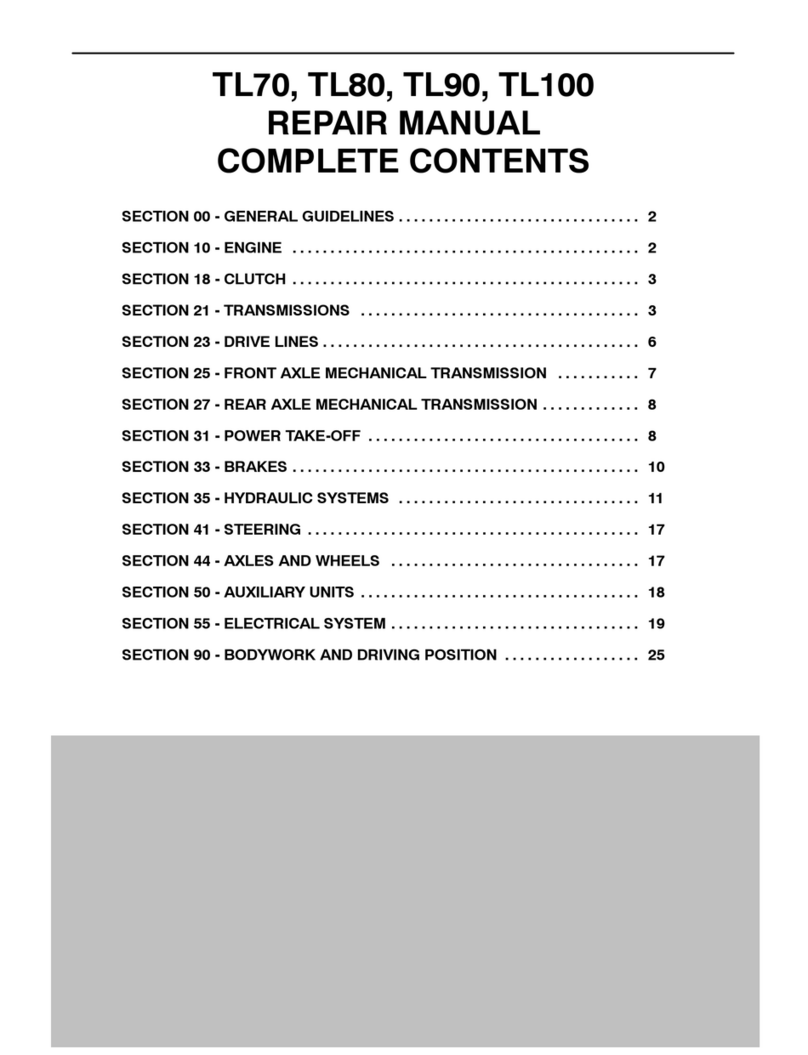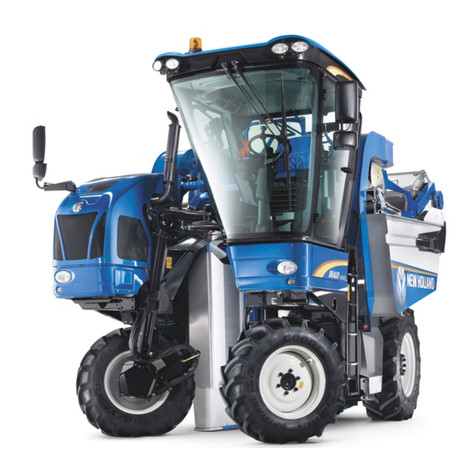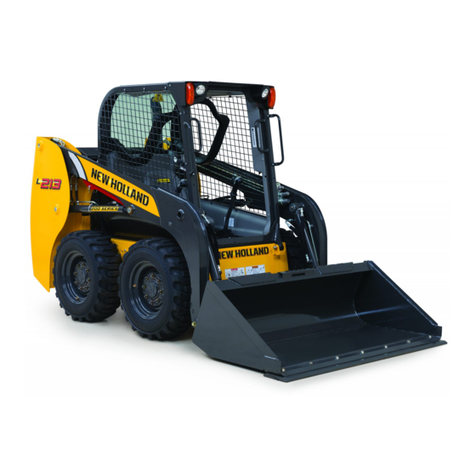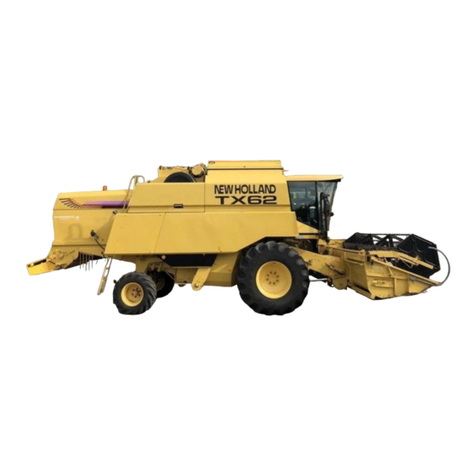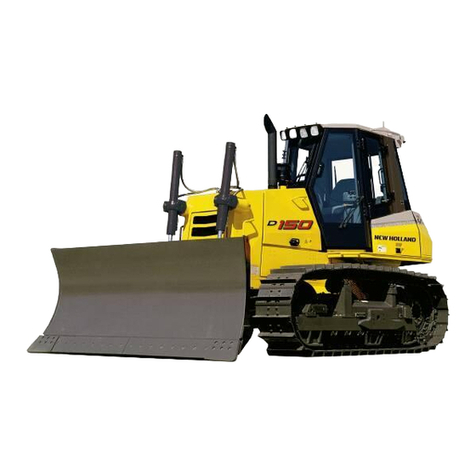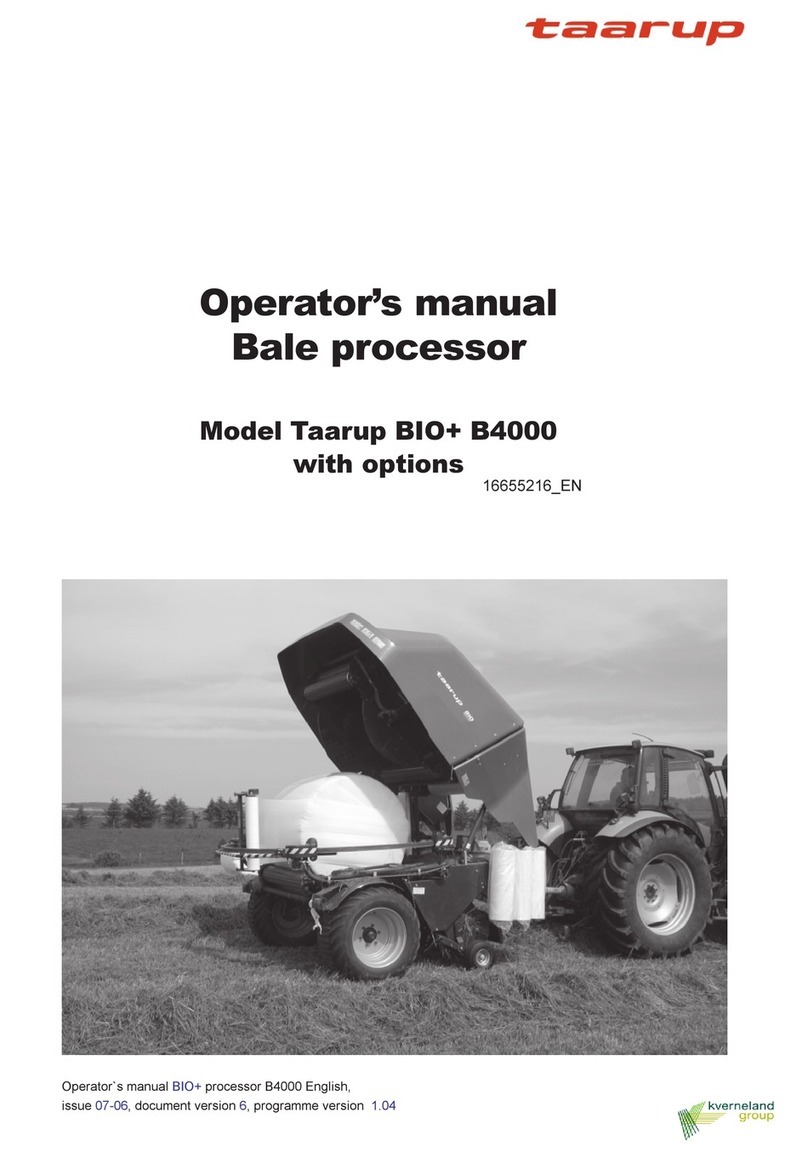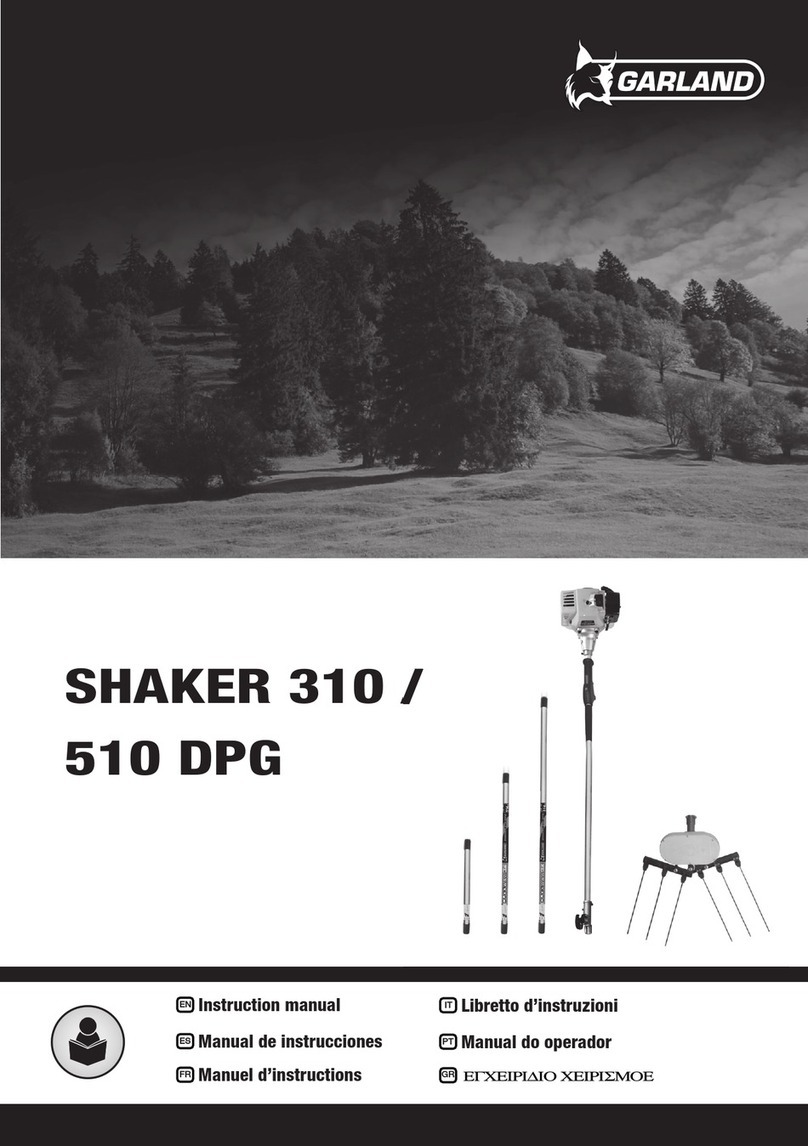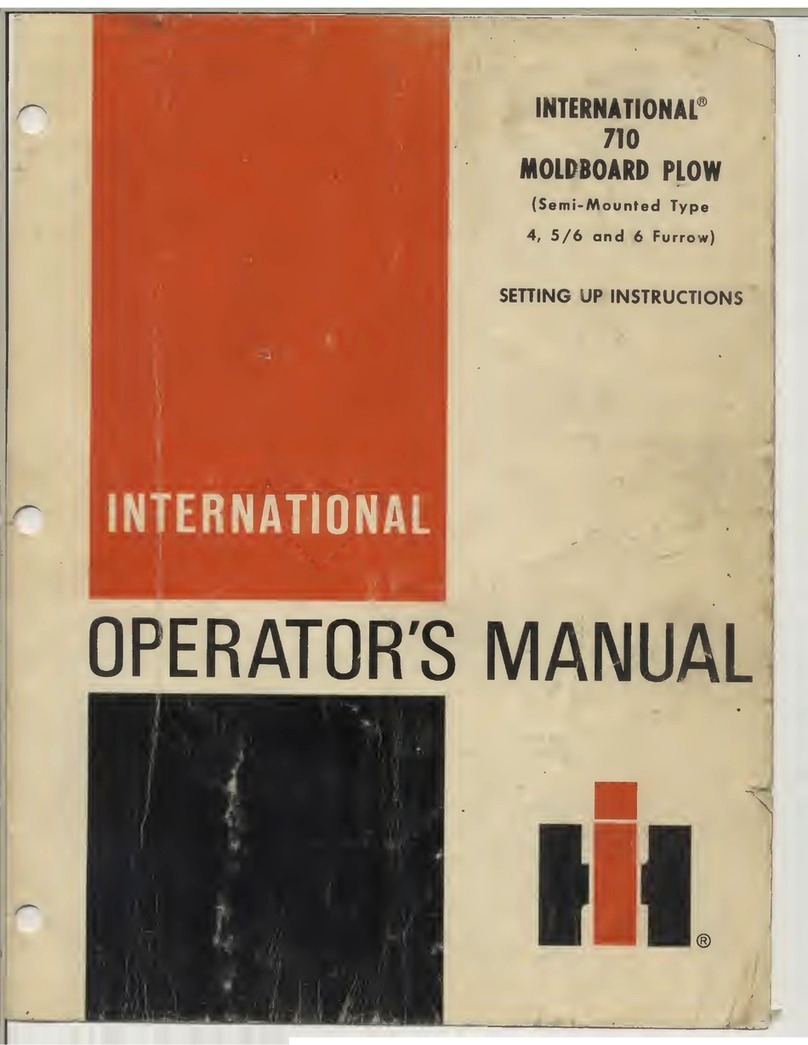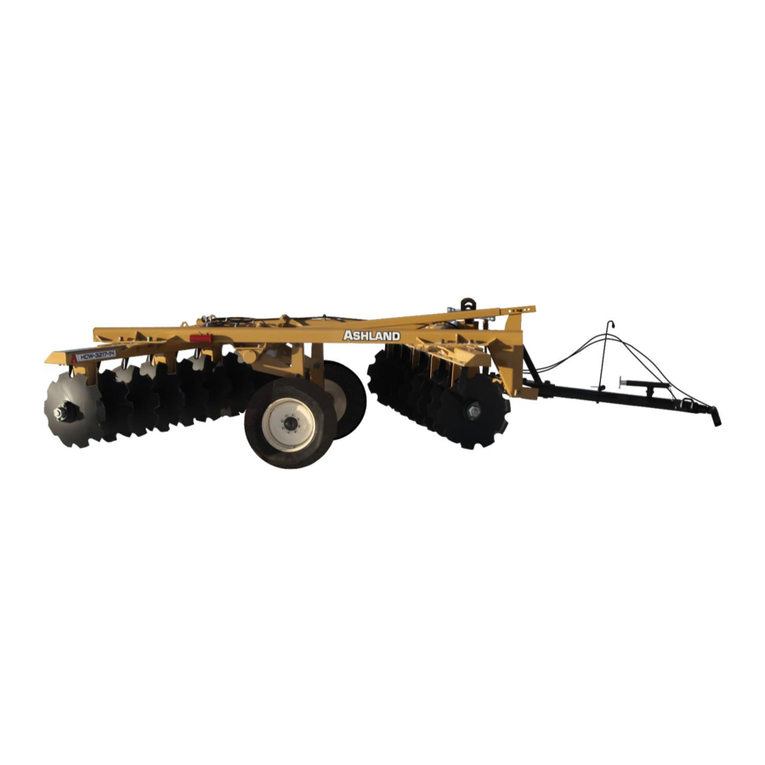
A
SAFETY
YOUR SAFETY IS OF UTMOST CONCERN TO FORD NEW HOLLAND, PLEASE FOLLOW
THE SAFETY RULES LISTED, NOT ONLY FOR YOUR OWN GOOD, BUT FOR THE PEOPLE
AROUND YOU.
1. DO NOT ALLOW CHILDREN OR BYSTANDERS AROUND THE MACHINE WHILE IT IS BEING
ADJUSTED, SERVICED, OR OPERATED.
2. ALWAYS USE A SAFETY STAND IN CONJUNCTION WITH HYDRAULIC JACKS OR HOISTS.
DO NOT RELY ON THE JACK OR HOIST TO HOLD THE LOAD COMPLETELY, AS THEY
COULD FAIL.
3. ALWAYS WEAR SAFETY GLASSES WHEN USING A HAMMER, CHISEL, OR OTHER TOOLS
THAT MAY CAUSE CHIPS TO FLY OFF THE WORK.
4. KEEP WORK ORGANIZED AND CLEAN. WIPE UP OIL SPILLS OF ANY KIND TO MINIMIZE
THE POSSIBILITY OF A FALL. KEEP TOOLS AND PARTS OFF THE FLOOR TO FURTHER
REDUCE THE POSSIBILITY OF SERIOUS INJURY.
5. BE SURE TO REINSTALL SAFETY DEVICES SUCH AS GUARDS OR SHIELDS AFTER
ADJUSTING OR SERVICING THE HARVESTER.
6. AFTER SERVICING THE HARVESTER, BE SURE ALL TOOLS, PARTS, OR SERVICING
EQUIPMENT ARE REMOVED FROM THE MACHINE.
7. WHEN USING A GAS TORCH, ALWAYS WEAR WELDING GOGGLES AND GLOVES. KEEP A
FULLY CHARGED FIRE EXTINGUISHER WITHIN REACH. DO NOT HEAT OR WELD NEAR A
FUEL TANK OR FUEL LINES, AND UTILIZE PROPER SHIELDING AROUND HYDRAULIC
LINES.
8. ELECTRIC STORAGE BATTERIES GIVE OFF HIGHLY FLAMMABLE GAS WHEN CHARGING,
AND CONTINUE TO DO SO FOR SOME TIME AFTER RECEIVING A STEADY CHARGE. DO
NOT UNDER ANY CIRCUMSTANCES ALLOW AN ELECTRIC SPARK OR FLAME NEAR THE
BATTERY. ALWAYS DISCONNECT THE BATTERY FIRST BEFORE WORKING ON THE
ELECTRIC SYSTEM.
9. HYDRAULIC FLUID ESCAPING UNDER PRESSURE CAN HAVE ENOUGH FORCE TO
PENETRATE THE HUMAN SKIN. HYDRAULIC FLUID MAY INFECT A MINOR CUT OR
OPENING IN THE SKIN. IF INJURED BY ESCAPING FLUID SEE A DOCTOR AT ONCE. DO
NOT ATTEMPT TO REPAIR OR TIGHTEN HOSES THAT ARE UNDER PRESSURE. CYCLE
ALL HYDRAULIC CONTROL VALVES TO RELIEVE ALL PRESSURE BEFORE DISCON-
NECTING THE LINES OR BEFORE PERFORMING OTHER WORK ON THE HYDRAULIC
SYSTEM. MAKE SURE ALL CONNECTORS ARE TIGHT AND HOSES AND LINES ARE IN
GOOD CONDITION BEFORE APPL YING PRESSURE TO THE SYSTEM. TO LOCATE A LEAK
UNDER PRESSURE, USE A SMALL PIECE OF CARDBOARD, NEVER USE YOUR HANDS.
10. USE PULLERS TO REMOVE BEARINGS, BUSHINGS, CYLINDER SLEEVES, ETC. USE
HAMMERS, PUNCHES, AND CHISELS ONLY WHEN ABSOLUTELY NECESSARY AND BE
SURE TO WEAR SAFETY GLASSES.
11. BE CAREFUL WHEN USING COMPRESSED AIR. USEAPPROVED AIR BLOW GUNS, DO NOT
EXCEED 35 PSI (2.4 BAR), WEAR SAFETY GOGGLES, AND USE PROPER SHIELDING TO
PROTECT EVERYONE IN THE WORK AREA.
12. DO NOT WEAR RINGS, WRIST WATCHES, OR LOOSE FITTING CLOTHING WHEN
WORKING ON MACHINERY, AS THEY COULD CATCH ON MOVING PARTS AND CAUSE
SERIOUS INJURY. WEAR STURDY WORK SHOES.
THE ABOVE IS ONLY A PARTIAL LIST OF SAFETY WORK RULES. IN ADDITION, ALWAYS
REFER TO THE OPERATOR'S MANUAL FOR ADDITIONAL SAFE WORK RULES REGARDING
THIS MACHINE.
0-5
Find manuals at https://best-manuals.com
